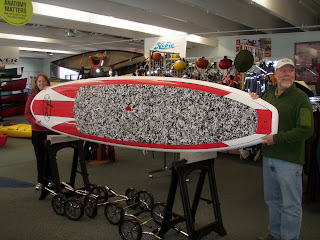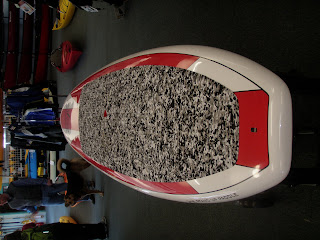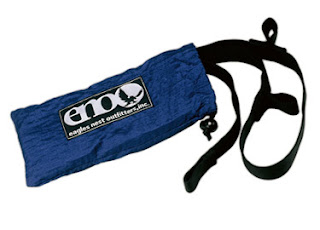
Tuesday, April 13, 2010
Saturday, April 3, 2010
Guide to Idaho Paddling

Tuesday, March 30, 2010
Pyranha Fusion on the Owhyee
 This last weekend,I (Brian Ward) took the Pyranha Fusion on a 3 day self support Middle Owhyee (Three Forks to Rome)and loved it. For 10'2" it is very maneuverable, tracks well, and the back hatch makes it easy to pack. At one point in the trip we had nasty 20-30 mph head winds, but with the Fusion's skegg paddling was a lot easier. One cool feature is the ability to add an accessories called the Venture Deck Pod. This adds an extra place for easy access storage. I put my map,screwdriver, and a banana in the pod and it made getting to the map a lot easier. Final outcome: Fun,maneuverable, great in the flats, and easy to pack.
This last weekend,I (Brian Ward) took the Pyranha Fusion on a 3 day self support Middle Owhyee (Three Forks to Rome)and loved it. For 10'2" it is very maneuverable, tracks well, and the back hatch makes it easy to pack. At one point in the trip we had nasty 20-30 mph head winds, but with the Fusion's skegg paddling was a lot easier. One cool feature is the ability to add an accessories called the Venture Deck Pod. This adds an extra place for easy access storage. I put my map,screwdriver, and a banana in the pod and it made getting to the map a lot easier. Final outcome: Fun,maneuverable, great in the flats, and easy to pack.Sunday, March 28, 2010
Ray Neef River Recreation Park Website
Dream Result DVD
Saturday, March 20, 2010
The Kayak Purchasing Guide

Kayak Purchasing Guide
Buying a Kayak
1. Types of Kayaks:
Whitewater Kayak-typically less than 9 feet long, shaped like a banana (rockered), small cockpit opening, paddled with a neoprene skirt, used for paddling large rapids and waterfalls
Great for whitewater paddling
Not for paddling lakes
Recreational Kayak-typically a 10-14 foot boat with little rocker, a large cockpit
opening, often paddled without a skirt, used for gentle moving rivers and lakes (the average boater)
Great for paddlers who are new to kayaking, want to paddle gentle waters, be
comfortable
Not as fast as sea kayaks, typically not used on the ocean or rough rivers
Sea Kayak-typically at least 14 feet long, very little rocker, small cockpit opening, paddled with a skirt, used for paddling on the ocean or sound, or paddling 5-25 miles in a day. Sea kayaks will have deck rigging for spare paddles, maps, and rescues.
Great for paddlers who want to paddle long distances (>5 miles), roll, and/or camp
Not as stable as a recreational kayak, tight fitting
Sit on Top Kayak-typically a 10-14 foot boat with little rocker, paddler sits “on top” of the kayak hull, which is sealed, water drains out of the kayak automatically
Good for-paddlers who don’t want to feel trapped, summer time, fishing
Not for paddlers who want to go fast, stay dry and warm
2. What will you use it for?
Lakes-get a boat that is fast and tracks straight usually at least 12 feet
Gentle Rivers-get a boat that has a flat bottom so that it will turn well usually 12 feet or less in length (depending on size of paddler)
Gentle Rivers AND Lakes-there are boats that do well at both, and some have a rudder or skeg you can use that on windy days at the lake.
The Sound-this is the ocean, with all its dangers (current, tides, waves, wind) get a boat that helps you minimize your risks and maximize your enjoyment. Buy a sea kayak.
3. Who will you paddle with?
You want to have a boat similar to the others in your group, if your group is all paddling 14 foot sea kayaks and you are in a 10 foot recreational kayak, you will have trouble keeping up. Similarly, if your main paddling partner has a 12 foot boat, you should also, or longer if they are a stronger paddler. Typically the longer a boat is, the faster it is.
4. Length:
Lakes: Typically 12 feet works great for most paddlers. It is easier to manage in windy conditions on the water, and easier to load than a 14 foot boat. I would only buy a 10 foot boat if you are doing some rivers, or plan to make very short (less than 2 mile) trips, or if small children will be paddling the boat often.
Rivers: Plenty of flat bottomed 14 foot boats work well on local rivers like the Dan and the Yadkin, but if you paddle mostly rivers and are not over 250lbs, a 10 foot or 12 foot boat will be much more maneuverable and keep you from getting stuck sideways on the rocks. Length and speed are not usually issues since the current is pushing you along, get the shortest boat that floats your weight comfortably.
5. Choosing the Boat:
Demo, Demo, Demo. Talk to a knowledgeable paddler who can help you decide on a few boats (2-3) that would suit your needs. Next, go to a “Demo Day” held at a local lake and paddle both boats. Get Outdoors holds demo days every other week during the summer giving you plenty of opportunities to paddle a wide variety of boats and make an informed decision. Paddling the boat you are going to buy is by far the best way to choose a boat. Regardless of what a friend or salesperson recommends, YOUR opinion is the one that really matters. The best way to make an informed decision is the paddle the boat.
6. Comfort:
When sitting in a kayak be sure you adjust the seat, foot pegs, and thigh braces to fit you. Are they easy to adjust? If you are not able to demo a boat on the water, be sure to spend at least 10 minutes or so sitting in your boat. You want to be sure you are comfortable. Something that is a little uncomfortable in the store will become unbearable once you are in the boat for hours. It will not matter how great the performance features of the boat are if you are not comfortable.
7. Price:
There are reasons some boats are more expensive than others. “Cheap” boats are often just that, cheap. Important comfort and hull design features are often missing on the least expensive boats. Spend the money to get a boat that is comfortable and paddles well so you enjoy your time paddling. If you do not enjoy paddling your boat it is likely to become an expensive garage ornament. If you store your boat properly it will last decades. Invest in a quality kayak that you enjoy paddling and it will pay off with many great days on the water over the years.
Friday, March 19, 2010
New 2010 Liquid Logic Coupe 10 Sit on Top





Versatility is the name of the game these days when it comes to getting your money’s worth and the Coupe offers it up in large doses. This one-of-a-kind hybrid design is fun, stable, easy to paddle and is as comfortable on rivers and lakes as it is riding your favorite ocean break. The Coupe is the choice when looking for one sit on top that can and will do it all. The Coupes hull is whitewater ready with soft edges for easy control and the bow is upswept allowing the Coupe to ride up and over river features as well as staying high and dry when taken in the surf zone. On quiet waters such as lakes and bays the Coupe transforms to a touring sit-on-top with a flick of the lever deploying its spring loaded skeg; a feature not found on any other sit-on-top kayak. With Al la cart seating to meet your personal needs and preferences, the Coupe offers up unparallel comfort and control.
Thursday, March 18, 2010
WE JUST GOT NEW PYRANHA BOATS
Wednesday, March 17, 2010
New 2010 Kayaks At Idaho River Sports!


Idaho River Sports, is currently receiving new 2010 kayaks daily. Here's a look at the new Inuit 12.5 Touring kayak from Native Watercraft. Native has advanced the design and comfort level of the Inuit series beyond any other touring kayak! The Tru-Track hull offers straight tracking despite the shorter hull length (12 1/2 feet) plus it provides a high level of maneuverability. Our new 5 Star Seating raises the standard for outfitting as it supports and cushions all day.
The materials used to build the Native Outfitting are from Recycled plastic resulting in a very breathable seat, hip pads, and back band. All of the outfitting is adjustable and allows for a highly custom fit.
For Lengths, We have all three. The Inuit 12.5 is a one size fits most, while the longer 13.5 fits smaller paddlers and the 14.5 fits larger to extra large paddlers. Inuits can be outfitted with a factory rudder.To learn more check out the link:
http://www.nativewatercraft.com/inuit_12.cfm
Or come on down for a test paddle or sing up to reserve one at this Weekends Canoe/kayak club outing.
Tuesday, March 16, 2010
Fun on the Water
Thursday, March 11, 2010
Whitewater Philosophy: Doug Ammons

Wednesday, March 10, 2010
Hammer Flats Wildlife Preserve
A once-planned 1,350-home development will be a wildlife preserve!!!!!!
Thanks so much to everyone who made this happen.
Tuesday, March 9, 2010
Work starts on Neef River Recreation Park!!!!!

http://www.boiseriverpark.com/
Sunday, March 7, 2010
Stand Up Paddle Boards in Boise Idaho





New at Idaho River Sports this year is Supin'!
They also pioneered the art of stand-up paddleboarding — also known as stand-up paddle surfing or beach-boy surfing — now all the rage among fitness enthusiasts and practiced from Cape Cod to Cape Town.
In San Francisco, where I live and surf, there’s almost always a stand-up paddleboarder in the lineup on any given morning. On days when there aren’t many waves, I envy the cruise-y ease of the paddleboarder as he maneuvers through flat water, getting exercise all the while. On a recent trip to Honolulu I decided to try stand-up paddleboarding in its birthplace.
First, I sought inspiration in the archives of the venerable Bishop Museum, founded in 1889 in honor of Princess Bernice Pauahi Bishop, the last descendant of the royal Kamehameha family. The museum has a renowned collection of natural and cultural artifacts from Hawaii and the Pacific Islands. Surfboards were once exclusively the province of royalty; the museum’s holdings include 19th-century wooden boards that belonged to chiefs and princesses, as well as other models that were used by the legendary surfer Duke Kahanamoku and first introduced at Waikiki.
The Waikiki beach boys began using outrigger canoe paddles with surfboards in the 1960s, as a way to keep an eye on their tourist charges and to get better pictures as the beginners made their first attempts at wave riding. Ask locals about stand-up paddleboarding, and many will reminisce about the first time they saw someone do it.
“I remember this one guy, he wore a construction helmet and had a cigar clamped in his teeth,” Charles Myers, an archivist at the Bishop Museum, told me as he brought out vintage black-and-white photos of Waikiki. “He used a paddle and stood up on this big, floaty tandem board to see above the water when he was teaching people to surf.”
As I examined photographs of fit young men surfing, swimming and paddling canoes — and even giving ukulele lessons to women on the beach — I thought of the tradition of the “waterman,” the athletic and aesthetic ideal to which ancient Hawaiian men aspired. The beach boys, the modern epitome of watermen, found joy in every kind of water sport and helped to popularize surfing as we know it.
One of the most famous was George Freeth, an accomplished swimmer and lifeguard who was the subject of a profile by Jack London in 1907. Freeth, who moved to California and became known as a pioneer of modern surfing, was awarded a Congressional medal for rescuing several fishermen during a treacherous storm in 1908.
What began as a matter of practicality for the beach boys started popping up in its modern form as a full-fledged sport in the past 5 to 10 years; there are now stand-up paddleboarding competitions all over the world, from flat-water races on rivers and lakes to big-wave ocean contests. Since the boards are large and stable in flat water, they are easy to use.
Hotels around Honolulu have capitalized on the craze; many now offer stand-up paddleboarding lessons. For my maiden voyage I ventured into the calm turquoise lagoon at the Kahala Hotel & Resort, which looks out at the Diamond Head and Koko Head craters.
The afternoon sun glinted off the water as I stood uncertainly in the warm shallows with the relevant equipment — thick 10-foot board, long, angled paddle — I’d just rented from Kahala’s beach shack. The attendant reassured me that there was nothing to it.
“Hop on the board, start on your knees and try paddling from that stance first,” he instructed, mimicking the motions as he talked. “Keep the flat of the paddle to the back when you stroke. Then try standing up, keeping your weight to the center of the board and legs slightly apart.” He paused. “That’s it.”
Oh, and one last bit of advice.
“You might want to stay away from the waves for now,” he called as I began to paddle away. “And fall shallow!”
The paddling part was easy. As I skimmed across the water, I noted how clear it was: I could see fish, seaweed-covered rocks and the wide expanse of white sand before it met the coral bank offshore. I wanted to see even more. So I tried, gingerly at first, to stand, laying the paddle across the board for stability. With a few wobbles, I was up, sea legs found.
Idaho River Sports Exhibits Rafts, Canoes, Kayaks at the Boise Sportsman Show




If you are in Boise this weekend come check out the Idaho Sportsman show at the Idaho Fair grounds.... http://www.idahosportsmanshow.com















